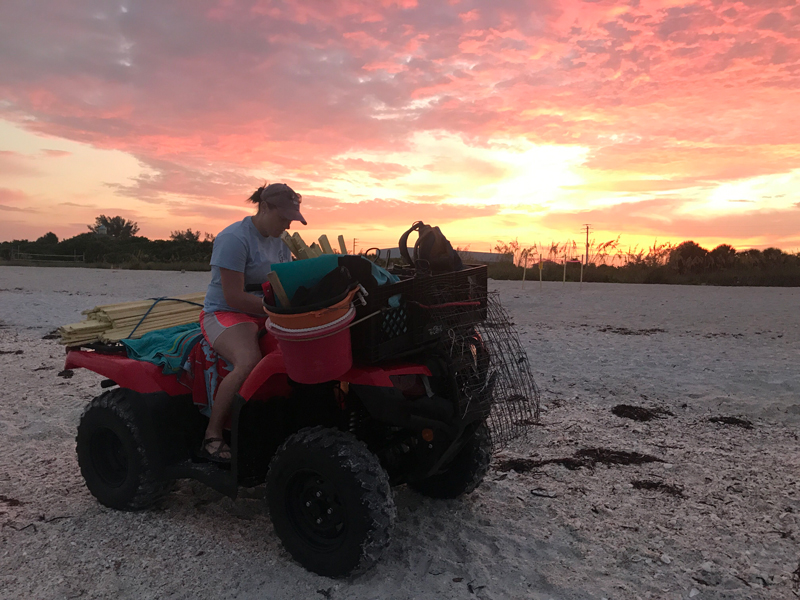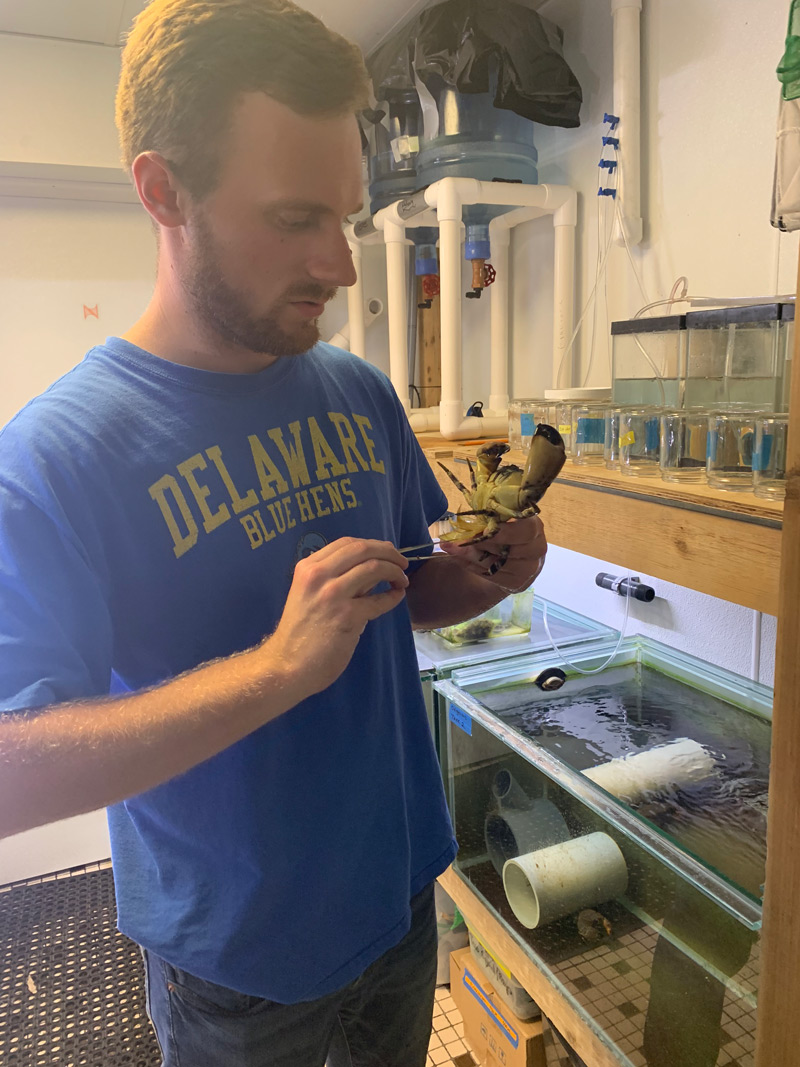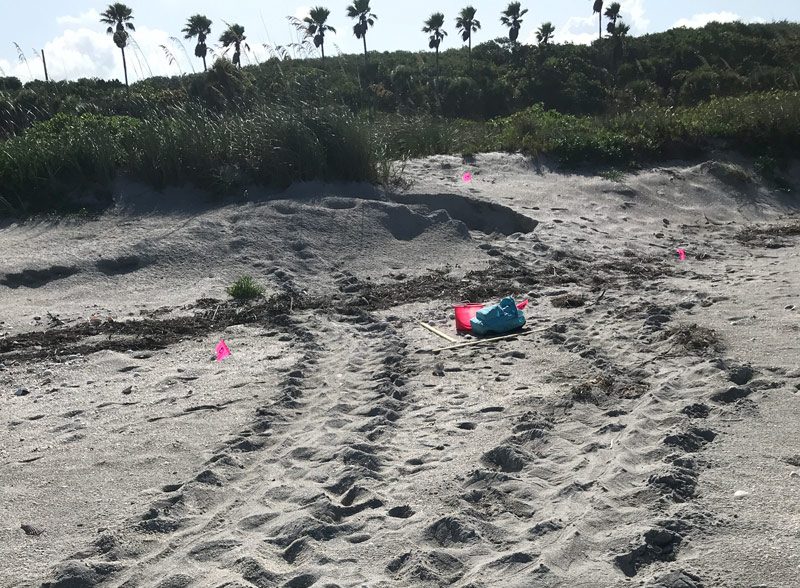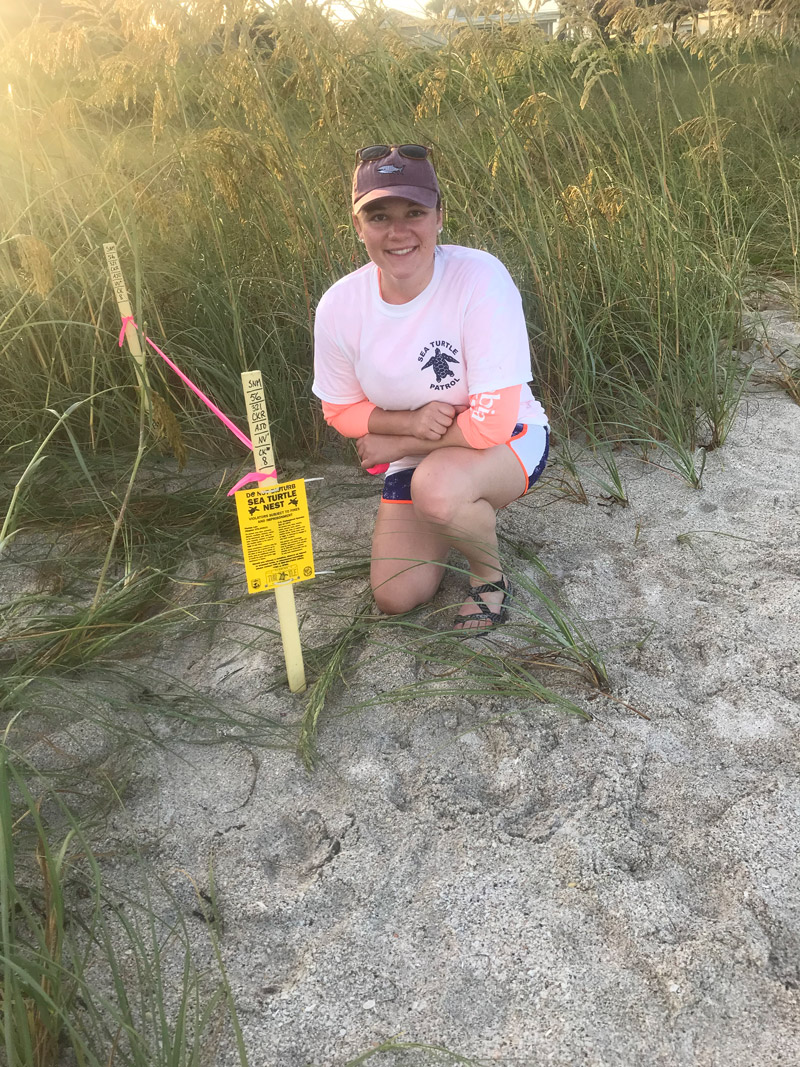


Marine life
Photos courtesy of Mote Marine Laboratory and Aquarium July 31, 2019
UD students and grads gain experience at Mote Marine Laboratory and Aquarium
Editor’s note: Research, community service, internships and study abroad are part of the summer for University of Delaware students. Follow them in action in our series of profiles and stories, which will be collected on the Driven to Discover website: https://www.udel.edu/home/driven-to-discover/
When University of Delaware graduate Alex Douwes was a child, his favorite animal was the squid and his favorite television show was The Blue Planet, a documentary series that took an in-depth look at the world’s oceans.
Having completed his degree in marine science from UD’s College of Earth, Ocean and Environment (CEOE) in 2018, Douwes took that childhood interest in ocean creatures and turned it into a crustacean ecology internship at Mote Marine Laboratory and Aquarium in Sarasota, Florida.
Douwes wasn’t the lone Blue Hen at Mote, however, as the CEOE marine science program has had significant recent success with their students interning at the lab. Over the course of his internship, Douwes was joined by fellow UD alums Bethany Pertain, Emily Beale, Erin Papke, and current UD student Audrey Ostroski.
Crab Lab
Douwes has worked in the crustacean ecology lab — affectionately nicknamed the “crab lab” — for the past six months. His duties include day-to-day lab maintenance and husbandry work, rearing and taking care of the Florida Stone Crabs in the lab.

Each day is different and Douwes said he enjoys that variation.
“Some days, I might have to go out and collect crabs, other days I might be inside doing a lot of data entry or some days I’ll be cleaning the tanks and taking care of some gravid female stone crabs that are about to release their eggs,” said Douwes.
Soon, he will take a break from the crab lab to start work on corals and looking at coral respiration in hypoxic (low oxygen) conditions.
He said his favorite part of the internship has been the chance to take part in real science, putting everything he learned at CEOE into practice.
Douwes singled out CEOE faculty members such as Joanna York, research assistant professor; Mark Warner, associate director of the marine science program and professor; Danielle Dixson, associate professor; and Patrick Gaffney, professor, as being particularly helpful during his experience.
He also credits the marine biology courses and all that he learned about invertebrates and animals in the ocean at UD with helping him at his internship at Mote.
“Having some of those skills that I really retained from UD and that UD taught me well has proved incredibly beneficial,” said Douwes. “In CEOE, it’s such a small college, we didn’t really have a giant research team, and that’s the same here at Mote. So being able to work with smaller research teams and in smaller groups and communicate well definitely helped. Those are things that I learned from UD.”

Sea Turtle Research
Ostroski is working at Mote during the summer of 2019 as an intern with the Sea Turtle Research and Conservation Program.
Each morning, she and her research group goes to the beach before sunrise and patrol for new sea turtle activity, looking for marks in the sand that indicate where the turtles came up on the beach.
Sometimes, the turtles make nests and lay eggs, but every once in a while, they do what’s known as a “false crawl” where they come up on the beach, turn around and go back to the water without nesting.
“We take measurements from the water line up to the nest or the top of the false crawl and then from there up to where the dunes start,” Ostroski said. “We also get a GPS measurement.”

Some days, they will verify nests by digging carefully to the top of an egg to get a measurement of how deep the eggs were laid. They will then re-cover the eggs and stake off the nests.
“We have special codes that we write on the stakes so we know what nest is what, and we plant our stakes into the ground around the nest and put on flagging tape so people who are on the beach know that there’s a sea turtle nest and shouldn’t bother it,” said Ostroski.
When they’re done at the beach, Ostroski and the other interns return to the office and put the data they’ve collected in a database that keeps track of each nest and each activity for the sea turtles. That data is dispersed to different agencies throughout the state that use it in conservation programs and research.
Though not part of her official internship, Ostroski was given the opportunity to go out at night with the night turtle tagging team and got to see the turtles nesting.
“We got to walk down the beach with this one turtle as it went back into the ocean, and it was the craziest experience,” said Ostroski. “I’ve dove with sea turtles before, but I’ve never gotten to see the whole process of the nest making and the egg laying.”
Please note: Mote's sea turtle activities are conducted under Florida Fish and Wildlife Conservation Commission Marine Turtle Permits 027, 054, 070, 048, and 028.
Contact Us
Have a UDaily story idea?
Contact us at ocm@udel.edu
Members of the press
Contact us at mediarelations@udel.edu or visit the Media Relations website

